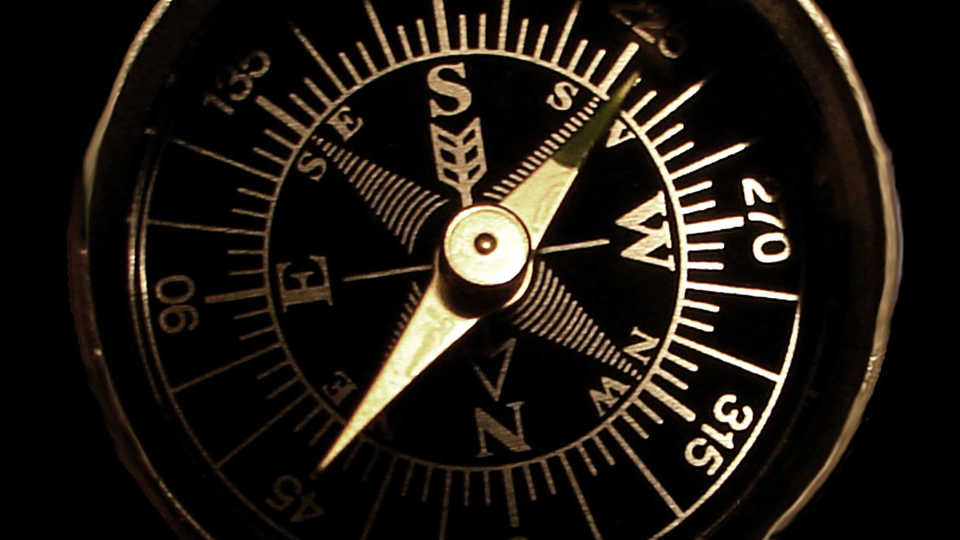In this activity students will:
- observe how the position of the sun in the sky changes during the course of the day.
- discover the cardinal directions by tracking the motion of the sun.

© Montesdioca
When looking for north, most people would reach for a compass. With a little time, you can also use the sun! In this activity, students track the sun's path across the sky to determine north, south, east, and west.
In this activity students will:
Begin your discussion with an exploration of the cardinal directions, using a map or a globe. Ask the class if they can identify the direction of north from their current positions. Ask how they determined their answer (maps, stars, compasses are possible answers). Ask them how they would determine directions if they were in an unfamiliar daytime location and did not have any devices or information to assist them.
It’s best to set up your shadow plot in the morning, around 9:00AM. An indoor location can be used if it will receive sunlight throughout the school day (south facing), or use an unshaded outdoor location that will allow the setup to remain undisturbed.
You can repeat this exercise at other times of the year to observe how the sun’s height in the sky changes over the course of the year, casting longer or shorter shadows that result in different arcs on the paper.
If you have a secure location, you leave your setup in place and mark the date of each observation on the same sheet of paper. If you need to reset the experiment each time, make sure you use the same gnomon for each observation. It is not essential to start or finish at the same time; once you have established your north-south line, you can compare the length and distances to the shadow paths using that line and the gnomon as a reference.
Many people know how to determine the cardinal directions by finding Polaris, the North Star, in the night sky. Polaris marks the north celestial pole and is located at the end of the Little Dipper’s handle in the constellation Ursa Minor. Polaris is always above the horizon as seen from northern latitudes. During the day, however, it’s too bright to see the North Star. A simple method of determining north (and therefore all of the cardinal directions) is to track the shadow of the sun as it passes through the sky in the course of a day.
From sunrise to sunset, the sun traces an arc across the sky, and reaches its highest point in the sky at local noon. For observers in northern latitudes, that point in the sky is always due south. While it is difficult (and dangerous) to measure the sun’s position directly, it is easy to observe the shadows cast by objects illuminated by the sun. We can use this information to determine when the sun is highest in the sky.
As the sun moves through the sky, the shadow cast by an object is constantly changing in length. The shortest shadow occurs when the sun reaches its highest point, at local noon. By tracking the length of the shadow cast by a stationary gnomon throughout the day, it is easy to determine the point at which the shadow is shortest. A line drawn between that point and the gnomon will align directly north and south.
It is important to remember that sun time and clock time are not the same; our clocks are set to standard times for each time zone, so locally, the sun can be at its highest point many minutes before or after 12:00PM on your watch (1:00PM during daylight saving time). You should not assume that your noon measurement is the shortest, but instead do a complete sequence as described in the lesson.
While this exercise works during any season, it is possible to extend the investigation by repeating it at different times of the year. The arc that the sun traces in the sky is highest in the summer and lowest in the winter, so the shadow pattern traced by this exercise will also change: shortest in summer, longest in winter. By comparing the paths, you can easily visualize how the position of the sun in the sky changes not only during the course of the day but also from season to season.
Some elements of this activity are adapted from the Yohkoh Public Outreach Project, Montana State University.
Grade Three
Physical Science
2a. Students know sunlight can be blocked to create shadows.
Earth Science
4e. Students know the position of the Sun in the sky changes during the course of the day and from season to season.
Fifth Grade
5-ESS1-2: Represent data in graphical display to reveals patterns of daily changes in length and direction of shadow, day and night, and seasonal appearance of some stars in the night sky.